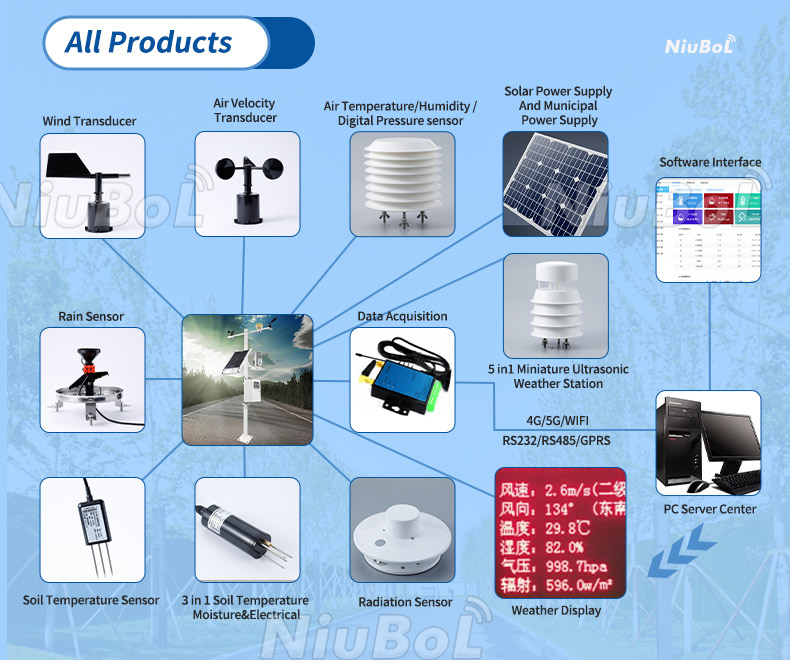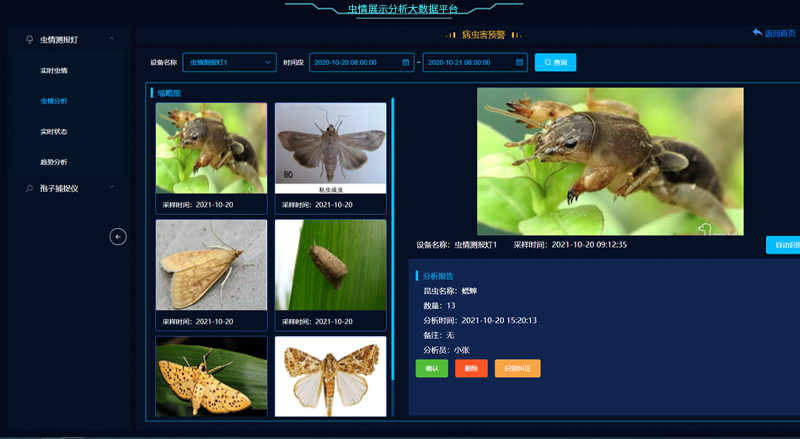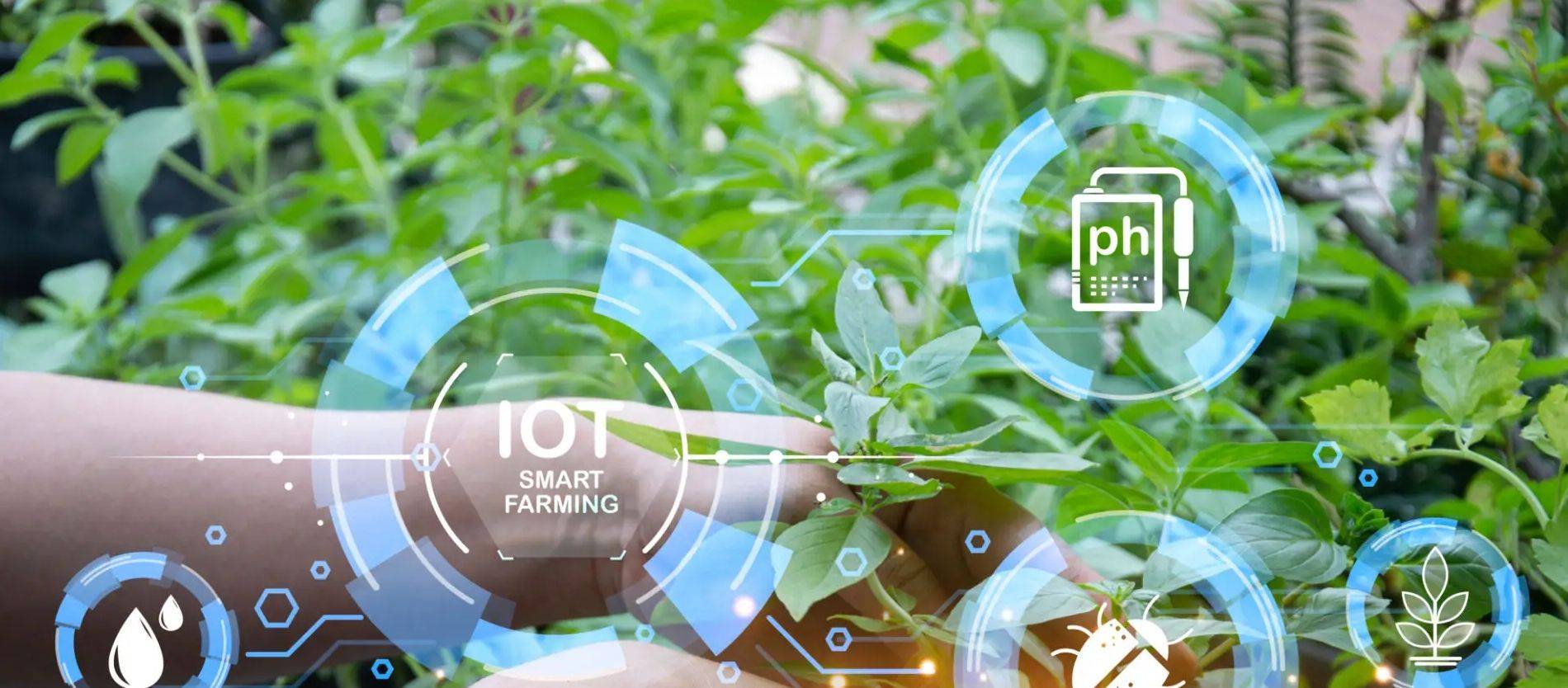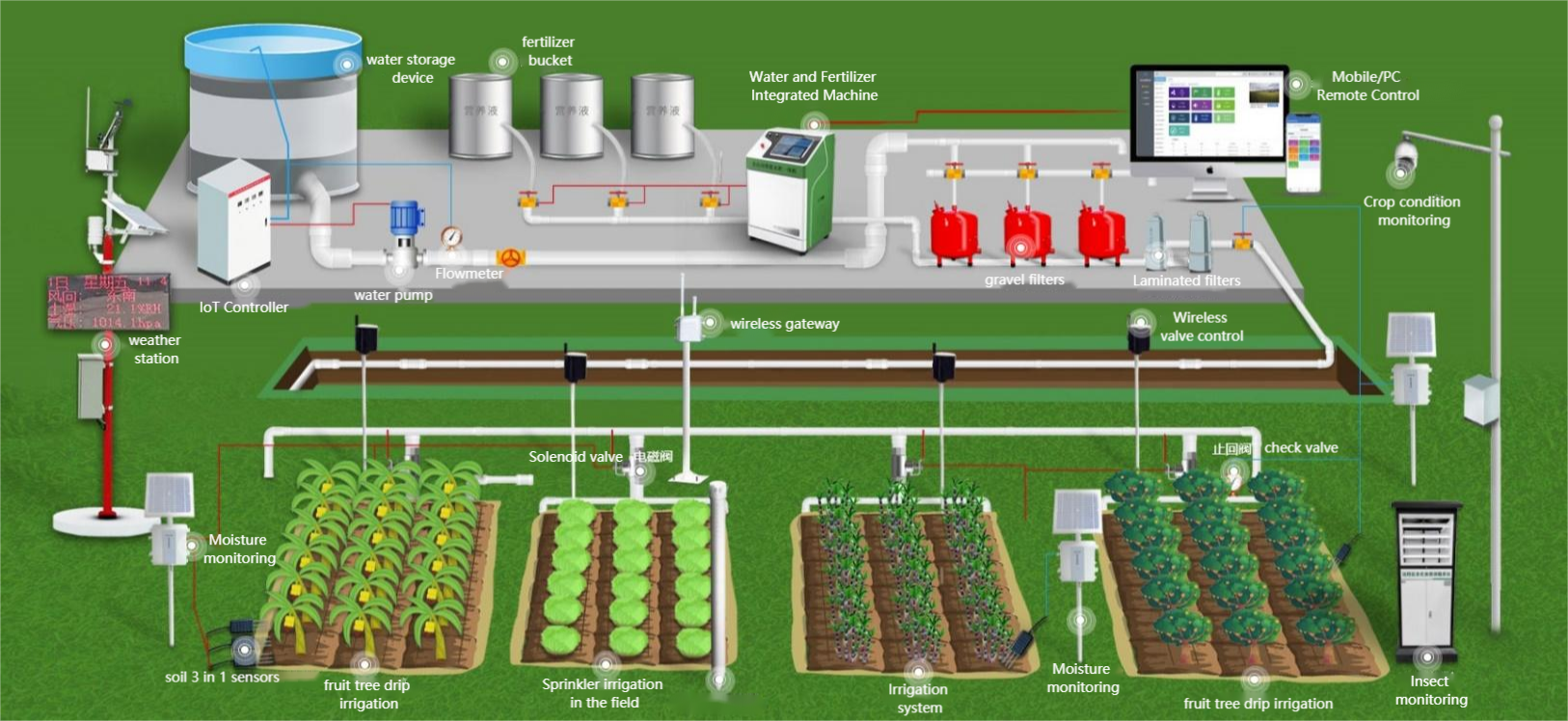

— Blogs —
—Products—
 Consumer hotline +8618073152920
Consumer hotline +8618073152920 WhatsApp:+8615367865107
Address:Room 102, District D, Houhu Industrial Park, Yuelu District, Changsha City, Hunan Province, China
Product knowledge
Time:2025-11-17 08:58:37 Popularity:138
Amid the wave of rural revitalization and modern agricultural development, the traditional "weather-dependent" farming model is rapidly transitioning to "weather-informed" smart agriculture. Agricultural IoT serves as the core driving force of this transformation. As the "neural center" of smart agriculture, it leverages sensors, wireless networks, cloud computing, and big data technologies to break information silos, enabling comprehensive monitoring and scientific management of farmland environments, crop growth, and production processes.
Traditional agriculture relies heavily on farmers' experience to assess soil fertility, irrigation timing, and pest situations, resulting in low efficiency and yield reduction risks. Agricultural IoT builds a field-wide monitoring network to collect real-time data on soil moisture, temperature, light intensity, CO₂ concentration, and crop growth status, providing a scientific basis for smart agriculture decisions. For instance, in irrigation management, soil moisture sensors transmit data to the cloud platform in real time, where the system automatically calculates crop water needs and precisely controls drip or spray irrigation equipment, achieving accurate water replenishment while avoiding waste and ensuring healthy crop growth.

The foundation of agricultural IoT is a high-precision sensor network, including:
- Soil Sensors: Monitor soil temperature, moisture, conductivity, and pH for precision irrigation and scientific fertilization.
- Environmental Sensors: Track temperature, humidity, light intensity, wind speed/direction, rainfall, and CO₂ concentration to provide real-time crop growth data.
- Crop Growth Monitors: Use high-definition cameras or NDVI imaging to assess leaf color, plant height, and growth status.
- Pest and Disease Monitoring Devices: Employ optical recognition and insect-trapping equipment for real-time pest feedback.

Collected data is uploaded to the cloud for storage, analysis, visualization, and intelligent decision-making.
- Generates smart irrigation plans, fertilization schedules, and pest control strategies.
- Big data analysis predicts extreme weather impacts, optimizes planting density, and rotation plans.
- Aggregates multi-farm data to create regional crop health maps for agricultural authorities.
Linked with IoT devices via the cloud, it enables intelligent automation:
- Automatically activates drip or spray irrigation for on-demand watering.
- Controls greenhouse fans, humidifiers, and roller blinds to regulate temperature and humidity.
- Triggers supplemental lighting and CO₂ systems based on monitoring data for optimal growth conditions.

Devices like soil moisture transmitters and temperature/humidity sensors continuously collect data on soil temperature, pH, water content, and nutrients, enabling "replenish what’s missing" scientific fertilization and irrigation. Automation eliminates experience-based guesswork, reduces resource waste, and optimizes the growth environment.
Field-deployed weather stations monitor temperature, humidity, light, wind speed, and rainfall in real time. Upon detecting extremes like low temperatures, heavy rain, or drought, the system issues automatic warnings, prompting timely protective measures such as covering, drainage, or heating to enhance crop resilience.
High-definition cameras, pest sensors, and intelligent recognition systems detect early signs of pests and diseases. Compared to manual inspections, automated monitoring is timelier and more accurate, supporting precise pesticide application and scientific control. For example, in Shouguang greenhouse vegetable planting, over 1,000 days of IoT monitoring with precise environmental control increased yields by more than 20% over traditional methods while maintaining stable quality.
Analyzing soil and weather data, the system generates scientific irrigation plans and automatically controls drip systems. Data shows precision irrigation via agricultural IoT saves 18%-25% water while improving yield and quality, achieving efficient use of water and fertilizers.

Beyond individual farms, the cloud aggregates multi-farm data for big data analysis, producing pest warning maps and environmental recommendations. This provides decision support for government, enterprises, and technicians, enabling fully digital and traceable agricultural production.
Includes sensors for soil temperature/humidity, light intensity, CO₂, wind speed/direction, rainfall, and pest conditions for comprehensive field data collection.
Uses LoRa, NB-IoT, 4G/5G, or Wi-Fi to transmit field data to the cloud in real time, ensuring fast, secure, and stable information flow.
Cloud platforms and mobile apps employ big data, AI algorithms, and predictive models to generate irrigation, fertilization, and pest control strategies for automated and refined management.
Include smart gateways, controllers, and execution terminals to directly perform irrigation, fertilization, and machinery tasks, ensuring decisions are implemented in the field.

- Data-Driven Decisions: Real-time multi-dimensional data for precision irrigation, fertilization, and pest control.
- Remote Monitoring and Operation: Farmers access data and control devices via phone or PC anytime.
- Energy-Saving and Eco-Friendly: On-demand equipment operation reduces waste for green agriculture.
- Intelligent Warnings: Early alerts for weather, soil, or pest anomalies with automatic responses.
- Increased Yield and Quality: Optimizes environments, boosts resilience, and enhances produce.
- Resource Savings: Precision practices cut water/fertilizer waste and costs.
- Data Traceability: Full production records for food safety and sourcing.
- Supports Green Agriculture: Reduces chemicals for environmentally friendly, sustainable farming.

- Real-Time Data Collection: Covers soil, environment, and crop status.
- Intelligent Analysis: Auto-generates irrigation/fertilization plans and predicts pests/diseases.
- Remote Control: Cloud or mobile control of equipment in auto/manual modes.
- Multi-Farm Management: Single platform for regional production optimization.
- Historical Data Archiving and Analysis: Tracks long-term growth trends and benefits.
For corn, rice, wheat, etc., soil moisture sensors combine with weather systems for precision irrigation and fertilization:
- Saves 18%-25% water, improves fertilizer efficiency.
- Cloud auto-calculates water needs and controls drip systems.
- Early warnings for drought, frost, or storms reduce yield risks.
In complex greenhouse environments, monitors temperature, humidity, light, CO₂, and soil:
- Maintains optimal CO₂ for photosynthesis efficiency.
- Auto-activates supplemental lights or shading.
- Links rollers, fans, humidifiers for 24/7 regulation.

Pest devices detect early infestations.
Cloud analyzes seasonal data for tailored fertilization/irrigation.
Yields up over 20%, pesticide use down 15 kg/season.
Monitors water temperature, dissolved oxygen, pH for stable environments.
Auto-adjusts pumps, aerators, and feeding for higher efficiency.
These cases demonstrate how agricultural IoT optimizes management, significantly enhancing intelligence and sustainability.
Includes soil, environmental, and pest sensor networks; wireless communication; cloud analysis and control platforms; execution terminals and automation equipment.
Real-time soil and environmental data enable auto-calculation of needs, precisely controlling equipment to minimize waste.
Field crops (corn, rice, wheat), greenhouse vegetables, orchards, nurseries, lawns, and aquaculture.
Optimizes environments, precision practices, pest control, and data-driven management for faster, healthier, stable growth.
Yes, via sensors, weather data, and AI models for early drought, storm, frost, or infestation warnings.
No. NiuBoL provides user-friendly visualization platforms and apps for easy data viewing and operations.
All field data uploads to the cloud in real time, creating complete records from planting to pest control.
Yes, data-driven control reduces chemicals and waste for green, sustainable farming.
Yes, NiuBoL links with insect lamps, irrigation systems, fertilizer machinery, and drones for comprehensive management.
Agricultural IoT is the core driving force of modern smart agriculture, achieving full digitalization and intelligence through sensor networks, wireless communication, cloud computing, and big data. It boosts yield and quality, saves resources, reduces labor, and strengthens resilience against weather and pests.
The NiuBoL Agricultural IoT Solution focuses on intelligence, greening, and sustainability, providing scientific decisions for farmers, enterprises, and authorities—transforming agriculture from experience-driven to data-driven. With deeper IoT and AI integration, it will continue advancing efficient modern agriculture, ensuring bountiful harvests through technology rather than chance.
Prev:Agricultural Compact Weather Station Price and Purchasing Guide
Next:NiuBoL Forest Fire Risk Weather Station Selection and Application Guide
Related recommendations
Sensors & Weather Stations Catalog
Agriculture Sensors and Weather Stations Catalog-NiuBoL.pdf
Weather Stations Catalog-NiuBoL.pdf
Related products
 Combined air temperature and relative humidity sensor
Combined air temperature and relative humidity sensor Soil Moisture Temperature sensor for irrigation
Soil Moisture Temperature sensor for irrigation Soil pH sensor RS485 soil Testing instrument soil ph meter for agriculture
Soil pH sensor RS485 soil Testing instrument soil ph meter for agriculture Wind Speed sensor Output Modbus/RS485/Analog/0-5V/4-20mA
Wind Speed sensor Output Modbus/RS485/Analog/0-5V/4-20mA Tipping bucket rain gauge for weather monitoring auto rainfall sensor RS485/Outdoor/stainless steel
Tipping bucket rain gauge for weather monitoring auto rainfall sensor RS485/Outdoor/stainless steel Pyranometer Solar Radiation Sensor 4-20mA/RS485
Pyranometer Solar Radiation Sensor 4-20mA/RS485
Screenshot, WhatsApp to identify the QR code
WhatsApp number:+8615367865107
(Click on WhatsApp to copy and add friends)
